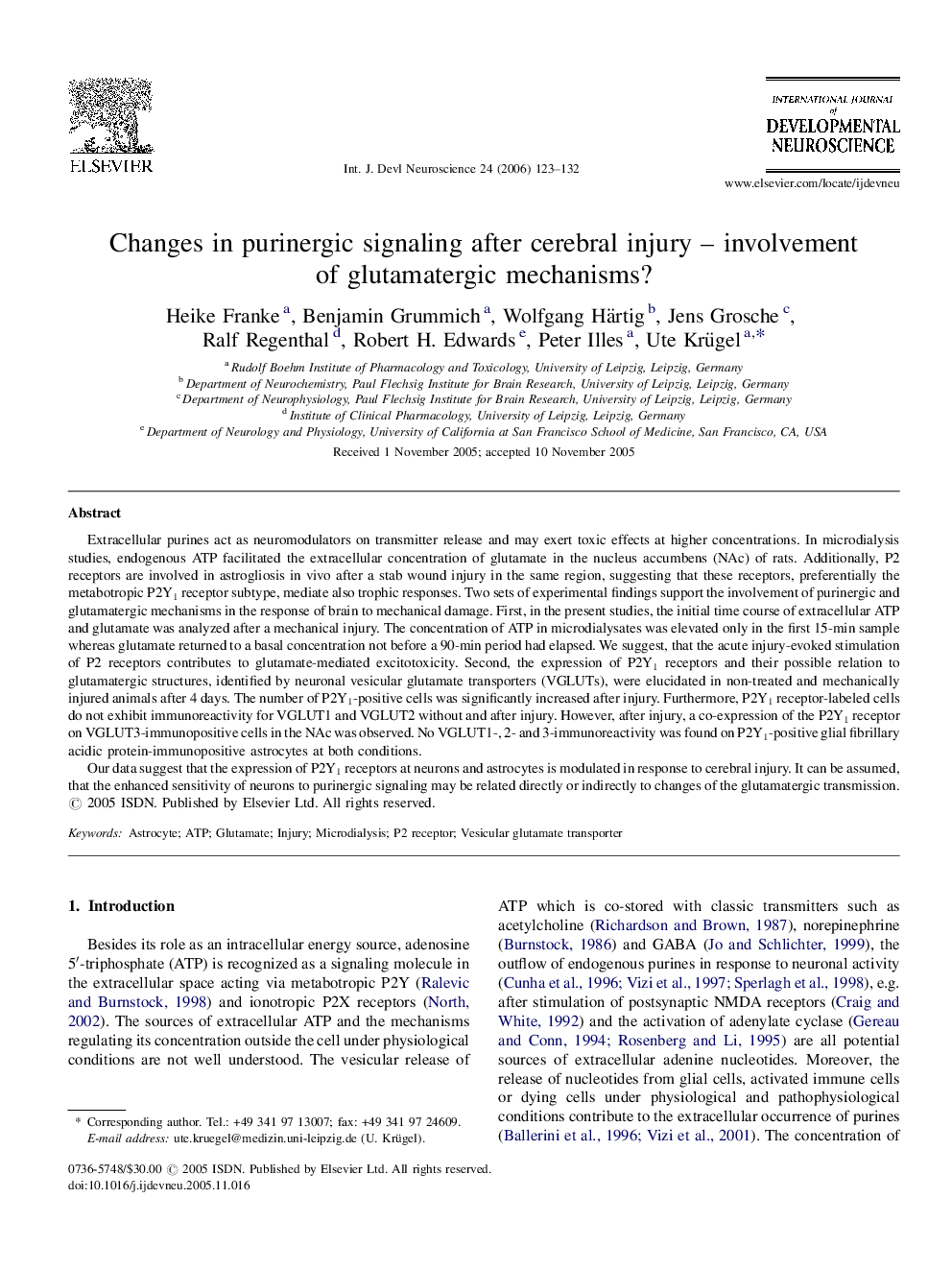| Article ID | Journal | Published Year | Pages | File Type |
|---|---|---|---|---|
| 2787168 | International Journal of Developmental Neuroscience | 2006 | 10 Pages |
Extracellular purines act as neuromodulators on transmitter release and may exert toxic effects at higher concentrations. In microdialysis studies, endogenous ATP facilitated the extracellular concentration of glutamate in the nucleus accumbens (NAc) of rats. Additionally, P2 receptors are involved in astrogliosis in vivo after a stab wound injury in the same region, suggesting that these receptors, preferentially the metabotropic P2Y1 receptor subtype, mediate also trophic responses. Two sets of experimental findings support the involvement of purinergic and glutamatergic mechanisms in the response of brain to mechanical damage. First, in the present studies, the initial time course of extracellular ATP and glutamate was analyzed after a mechanical injury. The concentration of ATP in microdialysates was elevated only in the first 15-min sample whereas glutamate returned to a basal concentration not before a 90-min period had elapsed. We suggest, that the acute injury-evoked stimulation of P2 receptors contributes to glutamate-mediated excitotoxicity. Second, the expression of P2Y1 receptors and their possible relation to glutamatergic structures, identified by neuronal vesicular glutamate transporters (VGLUTs), were elucidated in non-treated and mechanically injured animals after 4 days. The number of P2Y1-positive cells was significantly increased after injury. Furthermore, P2Y1 receptor-labeled cells do not exhibit immunoreactivity for VGLUT1 and VGLUT2 without and after injury. However, after injury, a co-expression of the P2Y1 receptor on VGLUT3-immunopositive cells in the NAc was observed. No VGLUT1-, 2- and 3-immunoreactivity was found on P2Y1-positive glial fibrillary acidic protein-immunopositive astrocytes at both conditions.Our data suggest that the expression of P2Y1 receptors at neurons and astrocytes is modulated in response to cerebral injury. It can be assumed, that the enhanced sensitivity of neurons to purinergic signaling may be related directly or indirectly to changes of the glutamatergic transmission.
